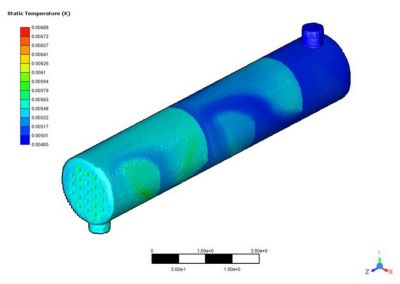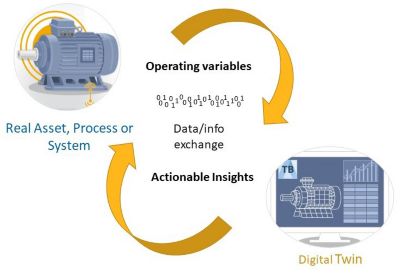Ansys 部落格
February 20, 2024
利用降階模型和數位孿生來增強模擬
在工程模擬的動態領域中,要達到效率和精準度仍是持續不斷的挑戰。Ansys Twin Builder 提供健全的解決方案,可建立、部署及管理混合式數位孿生,結合物理和資料,以更精確地反映實體系統。然而,高傳真度模擬的複雜需求經常會造成運算障礙,需要大量的時間和資源。這就是降階模型 (ROM) 做為關鍵技術發揮作用的地方,可以重新定義模擬與數位孿生的方法。
基本上,ROM(降階模型)是複雜模型的簡化版本,捕捉來源模型的行為,這樣工程師和設計師就能夠使用最少的計算資源快速研究系統的主要作用。隨著市場要求縮短設計週期,並生產更高品質的產品,ROM 受到產品開發產業的歡迎。
Twin Builder 利用 ROM 降低運算負荷,同時保持準確度,讓開發與設計團隊大幅加速創新。讓我們來探索 ROM 背後的核心概念、它們的優點,以及整合 Twin Builder 與 ROM 如何最佳化您的工作流程與產品。
簡化準確建模工作
簡而言之,ROM 代表複雜、高傳真度模型的精簡版。這些模型提取了其更複雜的對應模型精華,讓工程師和設計師有效率地調查系統的主要特性,並且能節省運算資源。
ROM 在產品開發部門中的顯著性上升,是因為公司滿足市場需求的壓力日益升高。這些需求需要縮短設計週期,同時維持生產優質產品。
Twin Builder 結合 Ansys 多物理模擬,將3D模擬之精細模擬轉化為簡化模型,以更快的速度產生準確且有效率的系統層級模型。舉例來說,Twin Builder 可使用 Ansys 結構、流體、電磁和半導體產品所產生的 ROM 來為複雜系統建模,包括機械組件、電磁致動器和機器、電路和纜線寄生、熱網路以及訊號完整性。
您也可以在 Ansys Workbench 中建立 ROM,並輕鬆匯入 Twin Builder。此外,Twin Builder 可建立無關求解器的 ROM。這表示 ROM 可以透過任何工具建立,包括第三方工具,而且只要訓練資料的格式符合要求,就能匯入 Twin Builder。對於 Twin Builder 而言,這需要將 ROM 匯入或匯出為功能模型單元 (FMU)。FMU 使用開放式、獨立於工具的標準,在不同的模擬工具之間交換模型。
與 3D 物理求解器的聯合模擬,保留了有限元素分析 (FEA) 和計算流體動力學 (CFD) 的完整準確度,可用於對流體組件和流動網絡、剛體和柔性體機械組件以及電機和致動器進行建模。如此一來,您就能縮短設計與開發週期,同時維持準確度與高傳真度的模擬,確保產品維持最佳品質。

設計師和工程師可以使用 Ansys Fluent 制定反應曲面模型,進而建立降階模型 (ROM)。
加速和增強模擬
ROM 具有加快模擬速度的潛力,通常速度可達 10 至 100 倍,可為實驗設計 (DoE) 和參數掃描研究等工作提供寶貴的資源。ROM 與 Twin Builder 無縫整合,可產生即時應用,增強系統反應能力。此外,ROM 可以大幅降低儲存需求,並且支援重複使用經驗證的 3D 物理模型,進一步擴大它們對工程及其他領域的影響。
ROM 的幾項主要優點包括能夠提高效率、即時預測和資源最佳化,如下所述。
- 效率:ROM 大幅降低運算需求,實現更快速的模擬與即時資料分析。這能加速數位孿生的開發與部署,支援更快速的決策和問題解決。
- 即時預測:ROM 提供在數位孿生中進行即時實體預測的功能。這能提升孿生的準確度和反應能力,使其成為更可靠的實體系統監測和控制工具。
- 資源最佳化:ROM 簡化複雜的模型並維持準確度,將運算資源的使用率最佳化。如此可降低成本,並讓更多種應用與產業均可存取數位孿生技術。

Ansys Fluent 評估複雜的降階模型 (ROM),以探索設計替代方案。對於交叉流動熱交換器而言,ROM 功能可在幾秒內為每個設計點提供解決方案,而完整的模擬可能需要超過兩小時。
實踐數位孿生
數位孿生和 ROM 就如同模擬本身,可為汽車、航太、醫療、工業設備等多種產業帶來好處。為了展示 Twin Builder 與 ROM 如何對這些產業的工作流程產生正面影響,我們以熱交換器的維護為例。
從食品和飲料到冷凍、製藥與化學加工,許多產業都會採用熱交換器。然而,無法預測及預期熱交換器的維護是一項挑戰,這會導致設備故障、延誤、以及其他生產干擾
在這種使用案例中,Ansys 提供了使用 Twin Builder、Ansys Fluent 和 ROM 的解決方案,方法如下:
- 穩定的氣熱 Fluent 模型 (具備約 6 百萬個網格單元)。
- 靜態 ROM (有 16 個設計點)。
- Fluent 的碳酸鈣厚度評估。
- 能夠將數位孿生匯出並部署到物聯網 (IoT) 平台。
靜態 ROM 是使用穩態模擬來預測解決方案的模型,可判斷系統的最佳設計參數與運作狀況。ROM 通常會經過模擬資料的訓練。具備將近 600 萬個網格單元的強建網格有助於確保結果的準確度高。以相同的方式建立具有 16 個設計點的 DoE,能促使對不同輸入值進行全面分析,在此範例中,每個設計點都對應至在 Fluent 中執行的模擬。

數位孿生推動預測性維護,讓使用者得以節省成本,並將資產操作程序最佳化。
另外,Fluent 的建模功能可讓您精確模擬多階段流程,包括氣體–液體、液體–液體、氣體–固體、粒子流動,甚至是離散元素建模 (DEM)。在此使用案例中,模擬多階段流程的功能讓您可分析並預測碳酸鈣的厚度,以及熱交換器中的潛在蓄積。
此外,使用 Twin Builder 部署數位孿生,可以透過即時監控來擴展這項深入見解。例如,數位孿生部署到 IoT 平台時,會透過感應器接收來自實際設備的輸入內容。如此一來,數位孿生就能即時預測性能、取得設備的目前狀態,以及執行任何其他目標任務。

Ansys Twin Builder 可輕鬆連接物聯網 (IoT) 平台,傳送與接收操作資料。
更輕鬆地採用數位轉型
在邁向成功數位化的過程中,ROM 是不可或缺的資產,能夠支援即時實體預測,提高數位孿生的準確度。這不僅能簡化複雜的流程,還能提供在數位時代蓬勃發展所需的重要見解與效率。
利用 ROM 的力量,就可以推動創新、加強決策,最終在不斷演變的工程與技術環境中成為領袖。
若要深入瞭解數位孿生與 ROM 如何改善工作流程,請觀看免費的精選線上研討會:使用 Ansys Twin Builder 以降階模型強化模擬。
若要探索 Twin Builder,請索取免費試用。